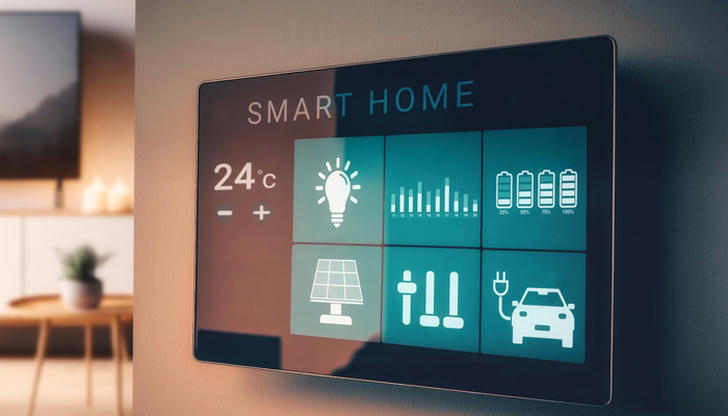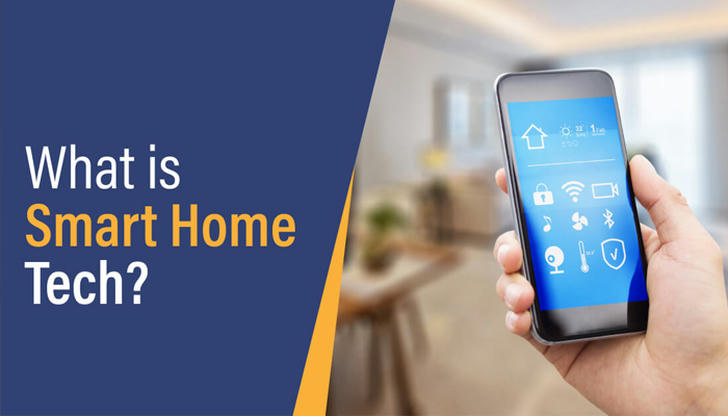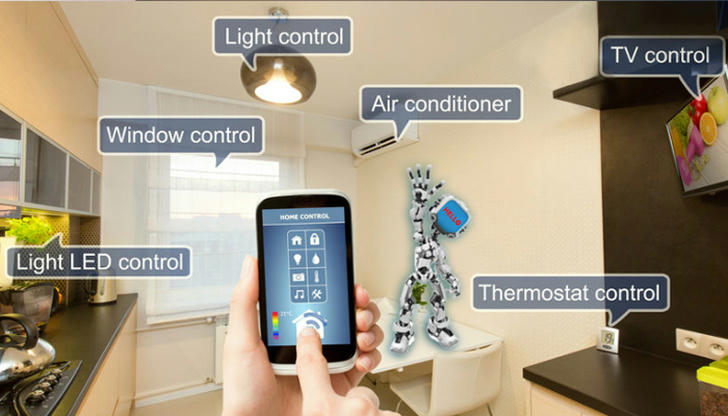Smart Home Basics: An Introduction to Automating Your Living Space for Convenience and Comfort

In recent years, the idea of transforming your home into a "smart home" has moved from futuristic fantasy to everyday reality. With the rise of internet-connected devices, more people are automating their homes to enjoy greater convenience, energy efficiency, enhanced security, and personalized comfort. But what exactly is a smart home, and how can it improve your living experience? In this article, we’ll explore the basics of smart home technology, how to get started, and the many benefits it can offer.
What is a Smart Home?
A smart home is a residence that uses internet-connected devices to manage and automate tasks traditionally done manually. These devices are controlled remotely through a smartphone, tablet, or voice-activated smart assistants like Amazon Alexa, Google Assistant, or Apple Siri. From adjusting the temperature to controlling lights and securing doors, smart home technology brings convenience and innovation to everyday living.
Common Smart Home Devices:
Smart Thermostats: Control your home’s temperature from anywhere.
Smart Lighting: Adjust the brightness and color of your lights remotely.
Smart Security: Use cameras, motion sensors, and door locks for enhanced security.
Smart Speakers: Control other devices, play music, set reminders, and more.
At the heart of a smart home is a central hub—your smart assistant—that coordinates all your devices and allows for seamless interaction.
Key Benefits of a Smart Home
1. Convenience
One of the most appealing aspects of smart home technology is the level of convenience it provides. With just a few taps on your phone or a simple voice command, you can adjust the lighting, change the thermostat settings, lock the doors, and even start your coffee maker. Smart homes offer an intuitive way to automate your daily routines, making life a little easier and much more efficient.
2. Energy Efficiency
A smart home can be an energy-efficient one. With devices like smart thermostats and energy-saving lighting, you can minimize waste and lower your utility bills. For example, a smart thermostat can learn your schedule and adjust the temperature accordingly, ensuring that you're not heating or cooling your home when it's unnecessary. Likewise, smart lights can be programmed to turn off when you leave a room or dim when it’s time to wind down.
3. Enhanced Security
Smart security systems are one of the most important components of a modern smart home. With devices like security cameras, motion sensors, and smart locks, you can monitor your home in real-time, receive alerts, and control access to your property—all from the palm of your hand. Whether you're at work or on vacation, a smart security system provides peace of mind by ensuring your home is always protected.
4. Comfort
Smart home devices allow you to create a living environment that’s tailored to your preferences. You can set your thermostat to adjust to a specific temperature before you even step inside, control the lighting to create the perfect ambiance, or even play your favorite music through a voice-controlled speaker. These small conveniences add up, creating an environment where you feel comfortable and in control.
How to Start Automating Your Home

Step 1: Identify Your Needs
Before jumping into smart home technology, it’s essential to understand what you want to achieve. Are you looking for convenience, security, or energy savings? Do you want to automate a single room, or are you planning to convert your entire home into a smart space? By identifying your needs, you’ll be able to prioritize which devices are most important for your lifestyle.
Step 2: Choose a Smart Hub
The smart hub is the backbone of your smart home system. It’s the central platform that allows all your devices to communicate and be controlled from one place. Popular smart hubs include Amazon Alexa, Google Assistant, and Apple HomeKit. Your choice of hub will depend on the devices you plan to use, your personal preferences, and compatibility with other devices.
Step 3: Select Your Devices
Once you’ve selected a hub, you can start adding devices to your smart home setup. Here are some essential devices to consider:
Smart Thermostats: Devices like Nest and Ecobee learn your heating and cooling preferences and adjust the temperature automatically. This not only saves energy but also ensures that your home is always at a comfortable temperature.
Smart Lighting: Smart bulbs, such as Philips Hue or LIFX, allow you to change the color, brightness, and schedule of your lights. These can be controlled remotely via your phone or voice commands, offering convenience and energy savings.
Smart Security: Security cameras like Ring or Nest Cam let you monitor your home remotely, while smart locks (e.g., August or Schlage) provide keyless entry and can be controlled from your phone.
Smart Speakers: Devices like Amazon Echo, Google Nest, or Apple HomePod act as the control center for your smart home. They allow you to control other devices, play music, set alarms, and provide voice-based assistance.
Step 4: Installation and Integration
Most smart home devices are easy to install, and many come with step-by-step instructions for setting them up. Typically, you'll need to connect the devices to your home’s Wi-Fi network and pair them with your smart hub. The process is usually straightforward, and many devices have companion apps that guide you through the process.
Step 5: Create Automations
Once your devices are set up, you can begin creating automation routines. For instance, you can schedule your lights to turn on at sunset, set your thermostat to lower the temperature when you leave for work, or even program your coffee maker to start brewing at a specific time. These automations not only save you time but also make your life more convenient by taking care of tasks automatically.
Popular Smart Home Devices

Smart Thermostats: Thermostats like Nest and Ecobee allow you to adjust the temperature of your home from anywhere, ensuring your home is always the perfect temperature when you arrive.
Smart Lights: With bulbs like Philips Hue or LIFX, you can dim lights, change colors, and create various moods in your home. Smart switches also allow you to control multiple lights from a single point.
Smart Security: Ring and Nest cameras allow you to monitor your home remotely. Smart locks like August provide keyless entry and allow you to control access to your home from your phone.
Smart Speakers: Devices such as Amazon Echo, Google Home, and Apple HomePod are essential for managing your smart home through voice commands. They act as the central point for controlling other devices and can also provide entertainment and information.
Common Challenges and How to Overcome Them
Compatibility Issues
One common challenge with smart home devices is ensuring compatibility between devices and hubs. Not all devices work with every platform, so it’s important to check compatibility before purchasing. Fortunately, many smart home devices now work with multiple ecosystems (Amazon Alexa, Google Assistant, etc.), and there are numerous integration options available.
Privacy and Security Concerns
Since smart home devices rely on internet connectivity, privacy and security are important considerations. Make sure your Wi-Fi network is secured with strong passwords, and avoid using default passwords for your devices. Regularly update software and use two-factor authentication when available to enhance security.
Initial Costs

Building a smart home can be a significant investment, and it’s easy to get carried away with the latest gadgets. However, starting small and gradually adding devices based on your needs can help spread out the costs. Begin with a smart speaker and a smart thermostat, and expand from there.
The Future of Smart Homes
As technology continues to evolve, the possibilities for smart homes are expanding. Some emerging trends include AI integration, which will make devices smarter and more predictive, and the use of voice control to make interactions even easier. In addition, sustainability is becoming a key focus in smart home technology, with more devices designed to conserve energy and water, making homes more eco-friendly.
Conclusion
Smart homes are more than just a trend—they’re a practical way to enhance your lifestyle by automating routine tasks and creating a more comfortable, efficient, and secure living space. By understanding the basics of smart home technology and carefully choosing devices that fit your needs, you can transform your home into a space that works for you. Start with a few key devices and gradually expand as you see fit, and enjoy the many benefits of living in a smart home.
